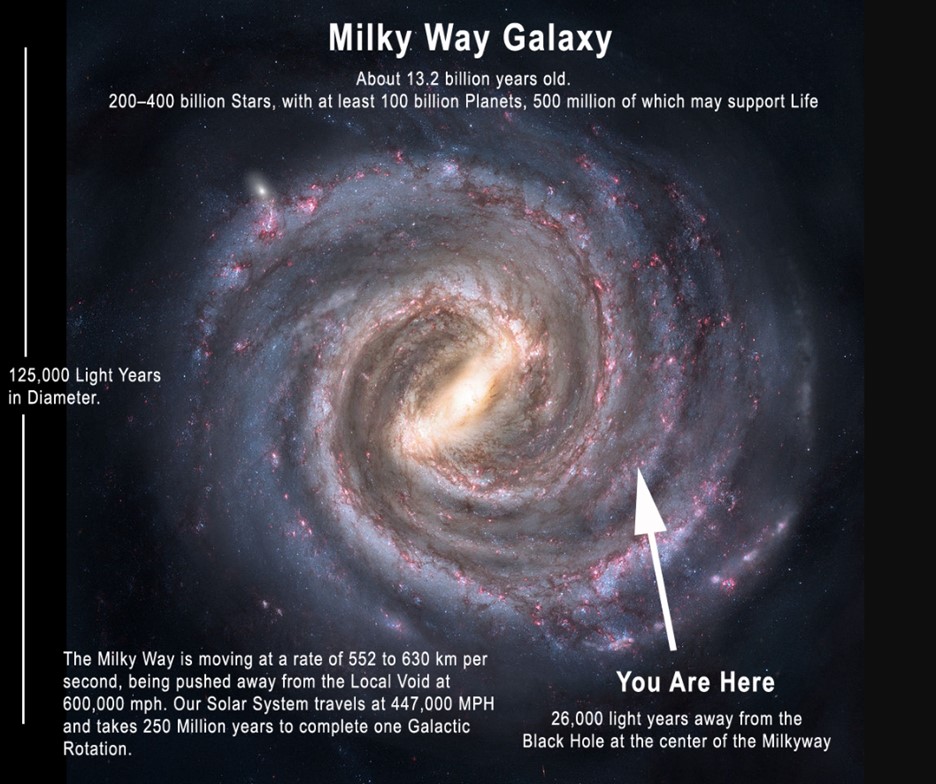An Astronomical Perspective
If we are ever going to imagine with limitless possibilities, we first have to remove the limitation from our thoughts. I’m talking about a major shift in our thinking so that we understand not only our place within our family, society or even the global community, but our place in the entire Universe. I am talking about cultivating an astronomical perspective.
Most people seldom think about outer space; in fact, outside their favorite Science Fiction show they probably don’t give it any contemplation at all. A relative few are aware that our planet is spinning like a top at nearly 1000 miles per hour. Just think about it — right now, at this very moment, we are traveling around the sun at a speed of around 67,000 miles per hour. Of course we can’t feel ourselves moving and so, like so many things in life, this space flight is simply taken for granted.
We tend to think of our planet as the center of the Universe, a snow globe with pretty stars painted on the outer shell. Everything else is “out there.” Even our closest celestial “neighbor,” the Moon, is still almost a quarter-million miles away and only shows up at certain times throughout the month. We take that for granted as well, despite the fact that it pulls all of our oceans along with it, and also affects our bodies. But again, why consider it when it doesn’t seem to affect our daily life? We are too busy to notice or care.
All those pretty stars we see at night, if we notice them at all, are just like our Sun, yet some are so enormous they make it seem like the head of a pin. There are billions of them out there beyond our solar system, and yet some of those “stars” are entire galaxies far beyond our own Milky Way, containing billions of their own stars and planets. All of these stars and galaxies out in the Universe are dancing around each other at overwhelming distances and speed. Our solar system is racing around the core of the Milky Way at over half a million miles per hour and yet we cannot comprehend it. As fast as we are moving, it requires one-quarter billion years to circumnavigate it! And yet we are unaware, trapped in the ignorance of our own choosing.
Out of the billions of galaxies beyond our own, the closest is the Andromeda galaxy. We can actually see it with the unaided eye, though without a telescope we just see its bright core, mistaking it for a dim, fuzzy star. Andromeda is 2.5 million light years away and has a radius of 110,000 light years. A light year (the distance light travels in one earth year) is roughly six trillion miles, which means Andromeda is 2.5 million times six trillion miles away, and yet we can still see it because it is over 200,000 thousand light years in diameter! Even with an expanded perspective it is difficult to grasp the enormity of scale and proportion of the Universe.
Here is something even more mind-blowing. If you’ve ever had the opportunity to see Andromeda through a telescope and under a dark sky, you know that you can see its spiral arms made of dust and billions of other stars of its own. As impressive a sight as that it is, what’s really amazing is that you are seeing what it looked like 2.5 million years ago, not how it is now. Why? Because that’s how long it took for its light to reach our eyes. You are literally looking back in time! We won’t see how it looks now for another 2.5 million years, not that we’ll be alive to see it, of course. This is but one galaxy of such immense proportions and distance out of billions.
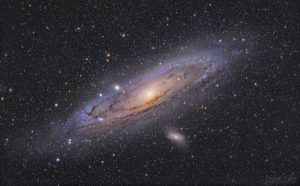
M31 The Andromeda Galaxy
In 1995, the Hubble Space telescope took the world’s most famous photo of our Universe. The astronomers using it pointed the Hubble at a region just above the Big Dipper that was no larger than a pinhead held at arm’s length. The result of the photo (after computer analysis) revealed over 15,000 distinct galaxies in that singular speck of the sky, some of which were among the very first galaxies in existence when our Universe was first formed. Just take a moment to imagine this Universe that we are currently aware of. What kind of imagination is required to grasp the immensity of the Universe and our place in it?
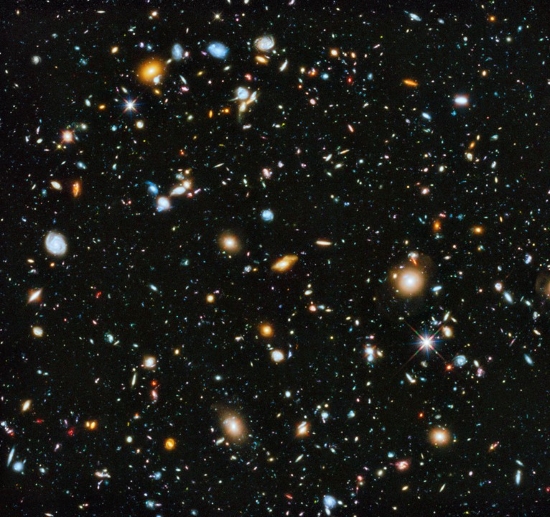
Hubble Space Telescope Image (above)
Of all the things one can find out in the Universe, none are more relevant or symbolic to our purpose than nebulae. These giant clouds of gas are pure energy, condensing under the pressure of gravity to create new stars, bursting with the life force that created everything, including us.
Of the billions of nebulae, there is one that’s easily visible to the naked eye: the Great Orion Nebula. Many have seen the winter constellation of Orion, the Hunter. Even the most novice of observers have seen the familiar “belt” of three bright stars, all in a neat straight line. What many do not realize is that just a bit below the left of these three bright stars lies two dim, fuzzy stars. The faintest of the two is not a star at all, but the Great Orion Nebula itself. It lies 1,344 light years (that’s 1,344 times six trillion miles) away from Earth and yet we can see it because it is forty light years in diameter, or two-hundred-forty trillion miles wide. Four of the brightest stars (called the Trapezium) within the heart of this nebula are considered “very young,” meaning they’re only about a million years old.
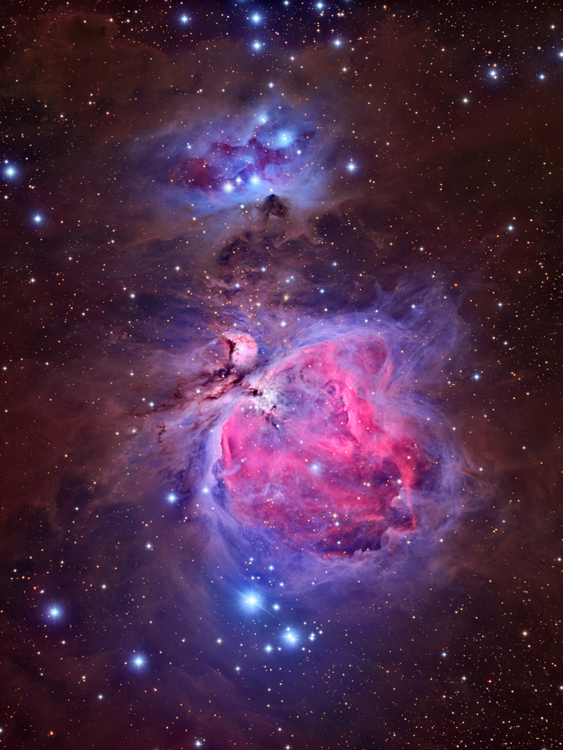
M42 – The Great Orion Nebula
The significance of this and other nebulae is not the enormity of them or their distance from us, but what they are and what they represent. Nebulae are often referred to as “stellar nurseries” or “star factories.” To view a nebula is to witness the Consciousness of the Universe at work. One could then, from a different perspective, say they are seeing God at work (as if all of life isn’t evidence enough). Even an atheist cannot deny the energy of the Universe is at work here, though they don’t attribute it to the same source.
The same energy we see creating these stars lives within us. We are one with everything in the Universe. Understanding that this energy lives within us and gives us life empowers us. If this energy can take clouds of gas and turn them into stars, surely, we can do something less majestic and manipulate it into the life we desire. It is only in our limited thoughts and beliefs that we have no power to do so, despite the abundant evidence to the contrary that the Universe provides to us.
We don’t need a telescope to see this evidence; in fact, one need look no further than our own Sun. It radiates this energy out into our solar system, giving and sustaining life on Earth. To see the Sun under the total solar eclipse is to glimpse this energy radiating out from it, shimmering out in the rays of its corona, out into a dark sky among other stars and planets in plain view, in the middle of the day. When one views the rare sight of totality from the perspective of oneness, it can be a life-transforming event, causing a major shift in how we see ourselves and the world around us in a profound way.
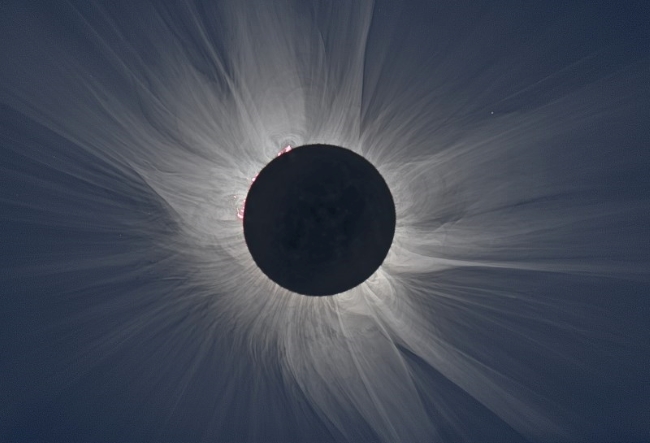
2017 Total Solar Eclipse seen across the USA
Imagine being Neil Armstrong, the first man to set foot on the Moon, as he looked back at the Earth and the rest of humanity. Imagine how such an experience would go right to the core of your being and alter your awareness of life. Edwin Aldrin (the second man on the Moon) said upon his return that the experience changed his life forever. Edgar Mitchell, the astronaut aboard Apollo 14 and the sixth man to walk on the surface of the Moon, said that on his way back to Earth he had a powerful “savikalpa samādhi experience” (where the body is in a trance-like state but the consciousness is fully perceptive of its blissful experience within), which prompted him to create the Institute of Noetic Sciences for the purpose of consciousness research. These men didn’t need to use their imagination, as their firsthand experience led directly to an incredible shift in their perspective. Yet we can use our imagination and wonder how it might change us as well.
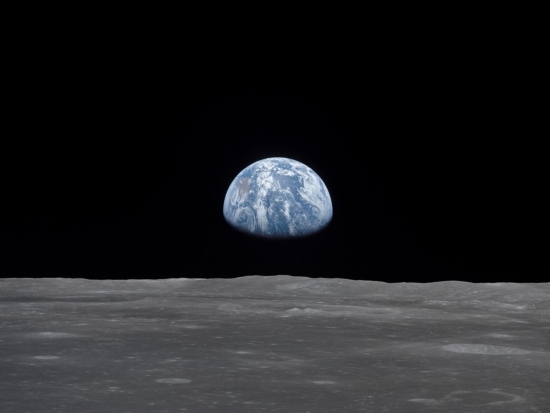
Apollo 11 photo of Earth from the Moon’s surface
If you’re wondering what an eighth-grade science lesson has to do with personal growth or finding our purpose, consider this: due to our tribal programming, most people never move past the eighth-grade perspective. They continue to live life with this limited awareness and imagination, especially those dwelling on the Material level.
Of those who do increase their awareness, most still view everything from a limited earthbound perspective; they see Earth as the center of a random Universe and themselves as individuals struggling to get by. But if we can truly grasp our place in the Universe and understand the energy within us as the Consciousness of it, our perspective can shift dramatically towards our higher purpose in life.
